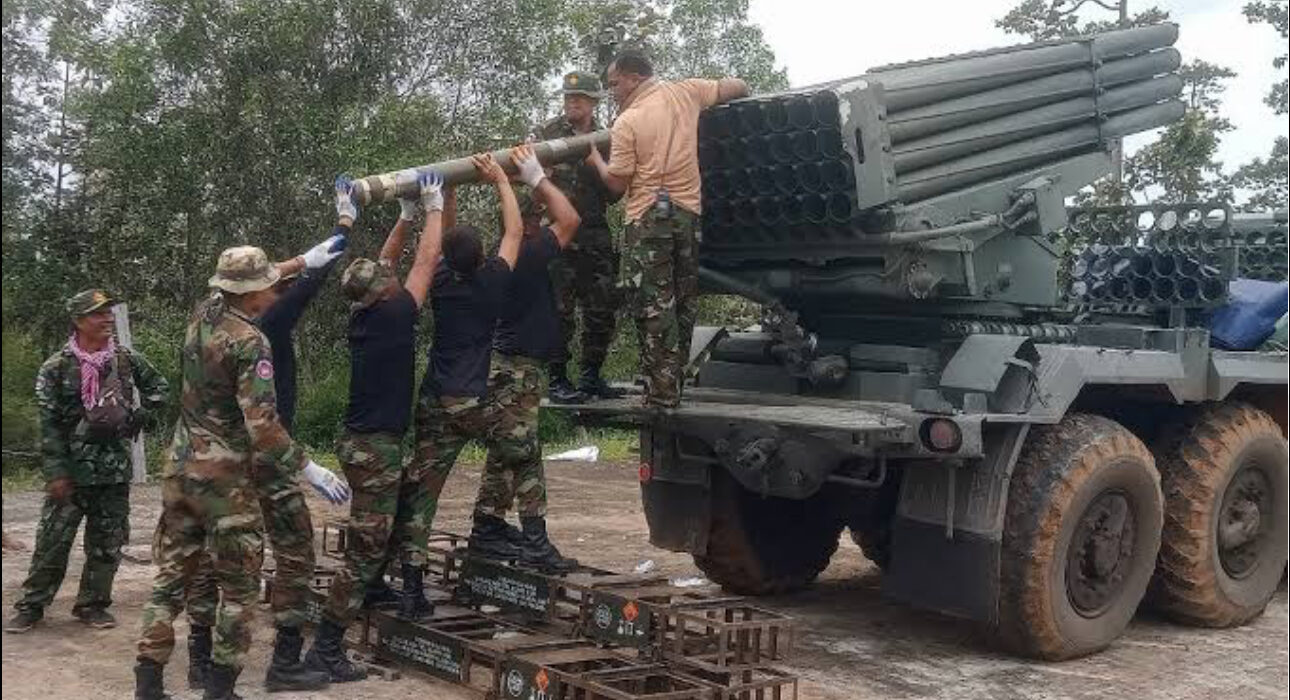Tensions Explode at Thai-Cambodian Border as Thai F-16 Jets Launch Strikes

Tensions between Thailand and Cambodia reached a boiling point early Thursday as the Royal Thai Air Force deployed F‑16 “Fighting Falcons” in a wave of airstrikes against Cambodian military positions along the disputed border.
The strikes mark the most dramatic escalation in a series of deadly clashes that have left civilians dead, thousands displaced, and both countries on the brink of open war.
The airstrikes reportedly targeted Cambodian positions near the historic Preah Vihear and Prasat Ta Muen Thom temple areas—long-contested zones that have triggered border confrontations for decades.
According to Thai military officials, the strikes were in retaliation for sustained rocket and artillery attacks from Cambodian forces, which they say included shelling of a hospital and civilian areas on Thai soil.
Casualty reports from the Thai side indicate that at least 11 civilians, including a child, have been killed, and over a dozen others wounded. Shell fragments from rocket attacks landed near homes, schools, and healthcare facilities in the Sisaket province, prompting widespread panic.
In response, the Thai government has evacuated over 40,000 civilians from more than 80 border communities. Emergency shelters have been set up in the affected provinces, while local authorities have shut down all border crossings with Cambodia until further notice.
Cambodia, however, has denounced the airstrikes as “unprovoked military aggression” and accused Thailand of violating international norms.
The Cambodian Ministry of Defence claims the air raids hit not just military outposts but also roads and infrastructure used by local farmers and traders. In a statement, the government said it had notified the United Nations and requested an emergency Security Council session.
Reports circulating on Cambodian media earlier in the day claimed that one of the Thai F‑16 jets had been shot down, but the Royal Thai Air Force dismissed the claim as false and part of a disinformation campaign. Military sources said all aircraft returned safely to base.
The renewed hostilities revive memories of the 2011 Thai-Cambodian clashes that also erupted over disputed temple zones. While the International Court of Justice ruled in 2013 that Cambodia had sovereignty over the Preah Vihear temple, tensions have continued over adjacent land and military fortifications.
This latest episode began with smaller skirmishes in late May, which intensified after a Cambodian soldier was killed in a patrol incident. Earlier this month, landmines injured Thai soldiers, and both sides began reinforcing their military presence in the area.
Diplomatic ties between the two Southeast Asian nations have now been significantly downgraded. Ambassadors have been recalled, and negotiations between military officials have stalled. China has urged both countries to exercise restraint, while ASEAN leaders have reportedly initiated backchannel efforts to prevent a full-scale war.
Meanwhile, affected civilians are bearing the brunt of the fallout. “We were told to leave everything and run,” said a Thai evacuee from Ban Phum Srol. “The ground shook from the blasts. My children haven’t stopped crying.”
Aid agencies have begun mobilizing support for displaced families, though access to some areas remains restricted due to ongoing shelling and the threat of landmines.
As the situation deteriorates, regional observers warn that further escalation could destabilize wider parts of Southeast Asia. Both governments are under pressure—domestically and internationally—to rein in the violence before the conflict spirals beyond containment.
For now, the skies over the Thai-Cambodian border remain tense, and the fear among residents is real: that more than just jets may soon be unleashed.









